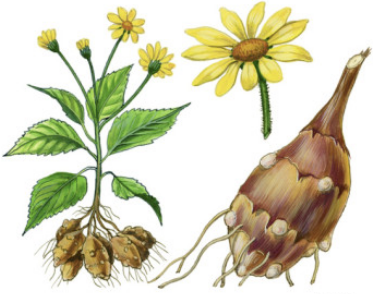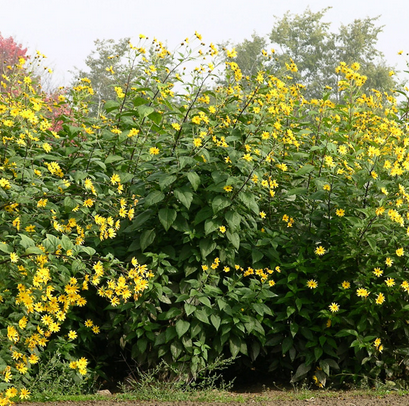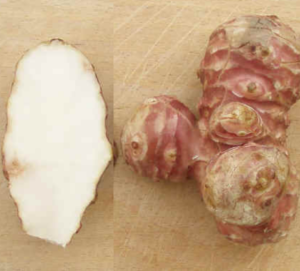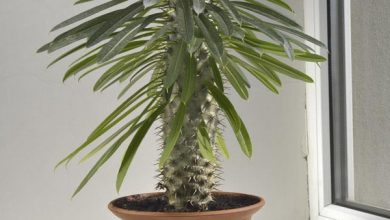Pataca or Jerusalem artichoke: cultivation and nutritional properties

Cultivation of the Jerusalem artichoke or pataca
The Pataca ( Helianthus tuberosus ), also known by other names such as Jerusalem artichoke , Jerusalem artichoke , Jerusalem artichoke , chestnut land or girasolillo , is a tuber vegetable family of the original composite of Mexico. It is a perennial plant , although it can also be grown as an annual plant, since the tubers are the perennial part and the aerial part is the annual one.
The Pataca is a tall plant that can even reach 3 meters high. It has serrated leaves and very pretty small flowers reminiscent of the sunflower.
 In terms of climate , the Jerusalem artichoke is a plant that likes sunny places with little wind, since it could twist or even break the stems. However, it is very resistant to cold, and could even withstand frost.
In terms of climate , the Jerusalem artichoke is a plant that likes sunny places with little wind, since it could twist or even break the stems. However, it is very resistant to cold, and could even withstand frost.
Before planting , a layer of about 2 cm of humus or compost is applied, although the ground chestnut is not a demanding plant in terms of soils rich in organic matter.
Whole tubers (or cut tubers if they are large) are sown directly at a depth of about 10 cm and leaving a distance of at least 50 cm between plant and plant. The sowing period runs from October to March and also in early spring.
We will take advantage of the stems to throw them into the compost pile.
 The Pataca is a plant that adapts well to all soils and that resists well in compact soils , but without permanent water stagnations, and without stones or large clods of earth that could impede the development of tubers. It is known that the optimal soils for the pataca are those that have a certain degree of freshness, are fertile, are loose and airy and are deep.
The Pataca is a plant that adapts well to all soils and that resists well in compact soils , but without permanent water stagnations, and without stones or large clods of earth that could impede the development of tubers. It is known that the optimal soils for the pataca are those that have a certain degree of freshness, are fertile, are loose and airy and are deep.
Once the plant measures about 20 cm, the mulch can be applied.
It resists droughts very well and is able to recover well after them, although its optimal development is reached when it receives water periodically.
The pataca is a crop that does not require much care during its development.
The tubers are harvested when the flowering period has passed and the aerial part begins to wither, thus we will obtain larger and more nutritious patacas.
Nutritional properties of Pataca ( Heliantus tuberosus )
 The pataca is a tuber with a yellowish or purple rind and a white interior and its flavor is reminiscent of artichokes or even truffles. Its appearance can be similar to that of ginger .
The pataca is a tuber with a yellowish or purple rind and a white interior and its flavor is reminiscent of artichokes or even truffles. Its appearance can be similar to that of ginger .
The Jerusalem artichoke provides us with inulin (natural fiber), minerals such as potassium, magnesium, sodium, calcium, iron or phosphorus, vitamins such as A, B1, B2, B6, C, D.
The consumption of Jerusalem artichoke is recommended as it has anti-tumor, cholesterol-lowering properties, improves defenses, improves digestion, relieves constipation and cleanses the intestinal tract, gives a feeling of satiety, which is why it is recommended in diets to lose weight . The pataca contains only about 25 kcal per 100 g, much less than other tubers.
As it is gluten-free, Jerusalem artichokes are used to make flour to replace cereal flour with gluten such as wheat.
The pataca can be cooked like any other tuber: steamed, fried, boiled, adding it to stews and stews, it can be added to soups, creams, etc. .
.

![Photo of Hydroponics or Hydroponic Cultivation: [Concept, Characteristics and Use]](https://www.complete-gardening.com/wp-content/uploads/2022/08/hydroponics-or-hydroponic-cultivation-concept-characteristics-and-use-390x220.png)
![Photo of Peperomia Plant: [Planting, Care, Irrigation and Substrate]](https://www.complete-gardening.com/wp-content/uploads/2022/08/peperomia-plant-planting-care-irrigation-and-substrate-390x220.jpg)
![Photo of Prune Fig Trees: [Importance, Season, Tools, Considerations and Steps]](https://www.complete-gardening.com/wp-content/uploads/2022/08/prune-fig-trees-importance-season-tools-considerations-and-steps-390x220.jpg)
